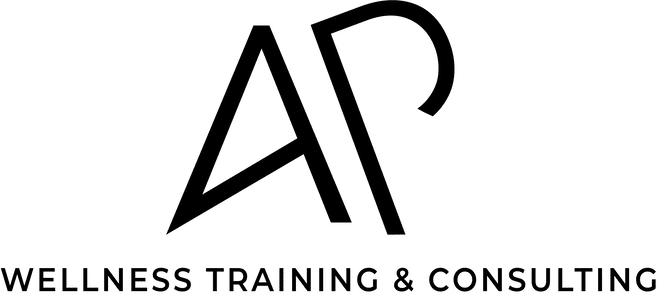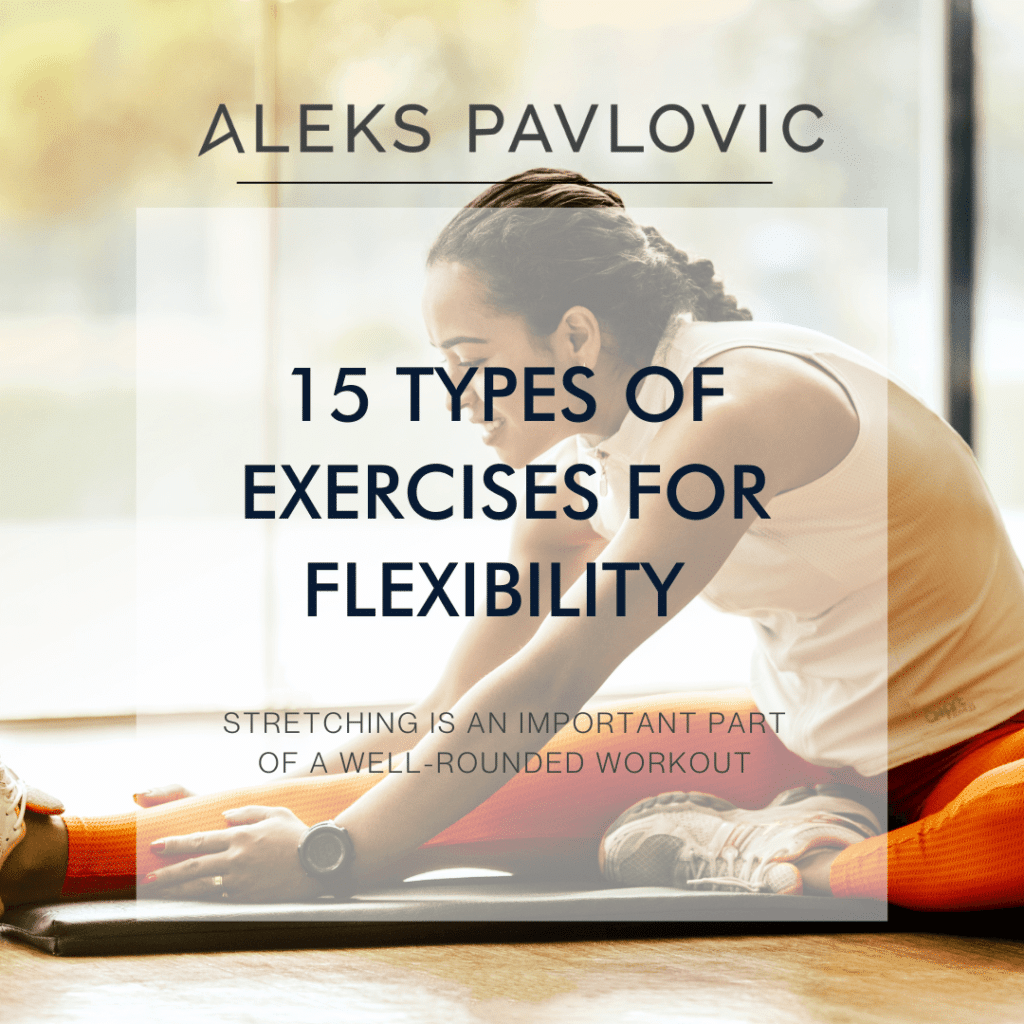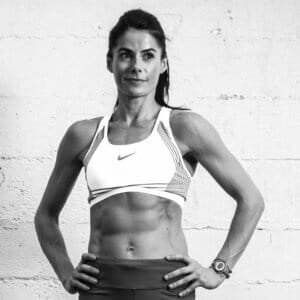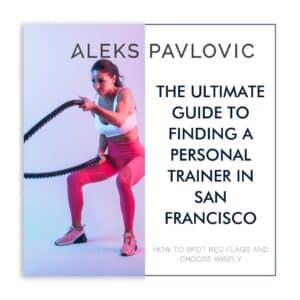How often do you stretch or incorporate flexibility exercises into your workout routine? Every day? A couple of times a week? Never? Flexibility is an essential part of a healthy exercise routine. It can increase your range of motion, prevent injuries, improve overall performance, and more. First, we’ll discuss the benefits of stretching; then, I’ll give you 15 types of exercises for flexibility to get you started.
I am a San Francisco-based personal trainer offering online and in-person fitness training and advice. With my company AP Wellness, I prioritize the whole person and will advise you on nutrition, emotional wellness, and behavior modification while planning custom workouts tailored to your lifestyle. My workouts include exercises for strength, conditioning, and, of course, flexibility.
What are the Benefits of Stretching?
The benefits of stretching include increased mobility and reduced aches and pains. If you work an office job, for example, certain parts of your body can become tight from sitting all day or completing repetitive tasks. If you don’t take the time to address the tightness in your body, it can take a toll over time.
According to the Mayo Clinic, the benefits of stretching include:
- Improved performance
- Injury prevention
- Increased blood flow
- Full range of motion in joints
In fact, a study from the Journal of Strength and Conditioning Research found that a group of 24 collegiate wrestlers showed improvement in almost every area of fitness, from speed and strength to endurance, after four weeks of adding dynamic stretching to their warmups.
When Should I Stretch?
There’s some debate about the best time to stretch. Some athletes and trainers prefer to include stretching in the warm-up, whereas others leave it until the end. Almost everyone agrees, however, that you should avoid static stretching when your muscles are cold. Static stretching involves holding a position for an extended period to increase muscle elasticity, which can lead to injury if your body isn’t ready.
Suppose you are preparing for a workout or competition that requires flexibility, such as gymnastics. In that case, it might be appropriate to include static stretching in your warmup but start with some cardio or other dynamic movement first.
A study by the International Journal of Sports Physical Therapy found that static stretching before a workout or competition can hinder performance in sports that require running and jumping. In this case, it’s best to begin your training with dynamic stretching, where you move continuously through a range of motion rather than holding a specific position. However, you can include static stretching at the end to help with soreness.
The last thing to think about with flexibility is frequency and duration. Harvard Health recommends stretching at least 2-3 times a week and including stretches for each major muscle group. Aim to hold each stretch for 30-60 seconds. Here are some suggestions for static and dynamic stretches to include in your next workout.
Dynamic Stretching
1. World’s Greatest Stretch
The World’s Greatest Stretch is a dynamic full-body flexibility exercise.
To do the World’s greatest stretch, start in a plank position on your knees or your toes. Then, bring your right foot up toward your right hand and plant it outside of your hand. Your left knee can stay on the ground, or you can lift it for an extra challenge.
Once you feel stable, lift your right hand toward the ceiling to add spinal rotation. Next, bring your right hand down and lift your left. Now switch legs.
2. Hamstring Scoop
The hamstring scoop improves flexibility in your hips and, you guessed it, hamstrings.
Put one of your feet slightly in front of the other with your toes up and heel planted on the ground. Next, bend at the hips and “scoop” your hands down toward the floor before raising them toward the ceiling. Repeat this a few times on each side.
3. Butt Kicks
Butt kicks are essentially a dynamic version of a standing quad stretch.
Simply bring your heel toward your butt at a pace that feels comfortable for you. You can even do this at a jog for some extra cardio.
4. Lunges
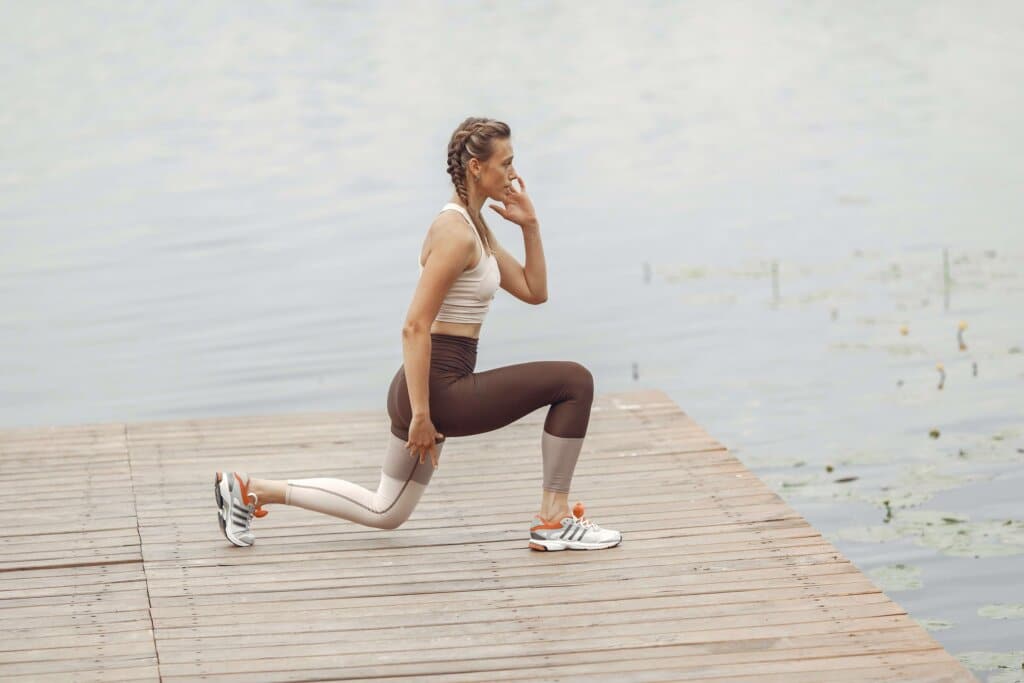
Lunges work your entire leg, from calves to glutes, helping build strength and flexibility. Both front and side lunges improve flexibility.
For a front lunge, start with feet hip-width apart. Step forward and plant one leg on the ground. Your back heel will come off the ground as you drive your back knee down to a 90-degree angle. Push off your front foot to return to your starting position.
5. Cat-Cow
Cat-cow encourages you to move your spine through a full range of motion.
You will start on your hands and knees with knees hip-width apart and hands under your shoulders. Stretch your spine toward the ceiling and look down toward your quads. This is the cat position.
Now bend your spine in the other direction by stretching your stomach toward the floor and looking forward. Move through each position several times.
6. Squats
Squats are another dynamic movement that can help with leg flexibility.
Start with feet about hip-width apart and drop your bottom toward the floor as if you were going to sit in a chair. Keep your chest up, core engaged, and knees bending over the second and third toes.
Static Stretching
7. Butterfly
The butterfly stretch focuses on your inner thighs.
Press the soles of your feet together while sitting on the floor. Next, bring your heels in toward your body and stretch your knees toward the floor. You can rotate in this position to add a lower back stretch.
8. Cobra
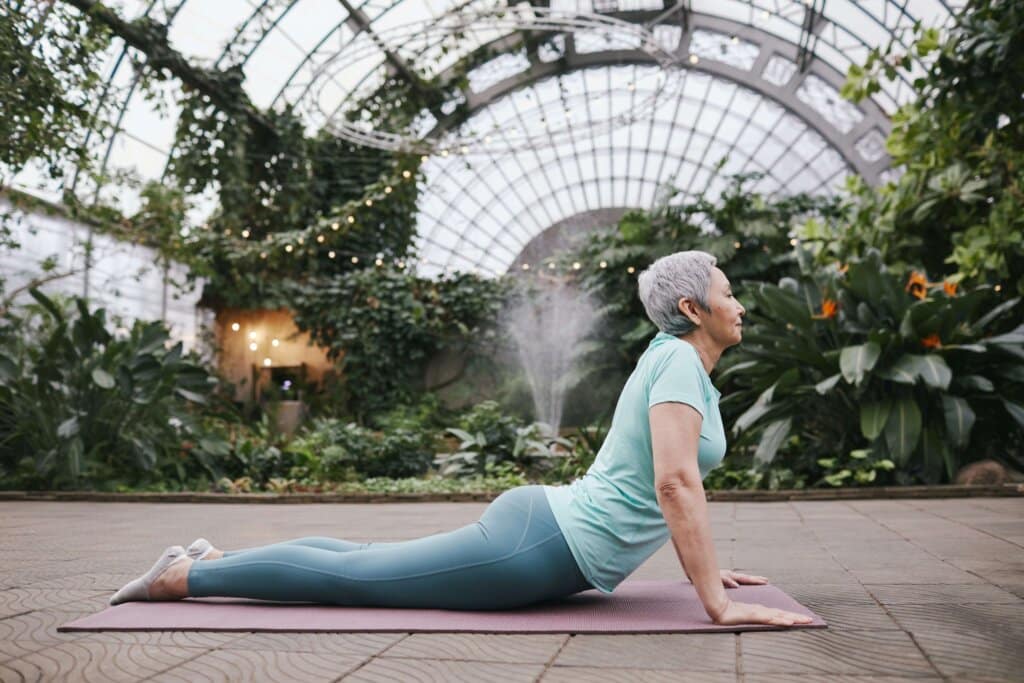
Cobra is similar to an upward-facing dog yoga pose and will stretch the front side of your core.
Lay flat on your stomach with your hands planted under your shoulders. Then, start pushing up slowly to stretch the front side of your body. You can fully extend your arms or keep them bent, depending on your level of flexibility. Keep your glutes tight as you extend your arms further to prevent lower back strain.
9. Figure-Four
Figure-four stretches your hip flexors, which are tight on almost everyone, especially if you sit a lot for work.
You can do this stretch either by laying on your back or sitting up. First, bend one of your legs up and plant your foot on the ground. Then place your other ankle over your knee. Next, press your knee with the crossed ankle toward the wall in front of you and hold for several seconds before switching.
10. Straddle Stretch
The straddle stretch focuses mainly on your hips and hamstrings.
Put your legs in front of you in a V position, then alternate stretching your hands toward each foot and down the middle.
11. Standing Quad Stretch
From a standing position, grab your right ankle with your right hand and pull toward your glutes. You can place your left hand on a wall to help with stability. After holding for a minute or two, switch your sides.
12. Tricep Stretch
Bend one of your arms and point your elbow toward the ceiling. Reach over your head with the opposite arm and grab your elbow. Pull gently back toward the wall behind you to increase intensity.
13. Shoulder Stretch
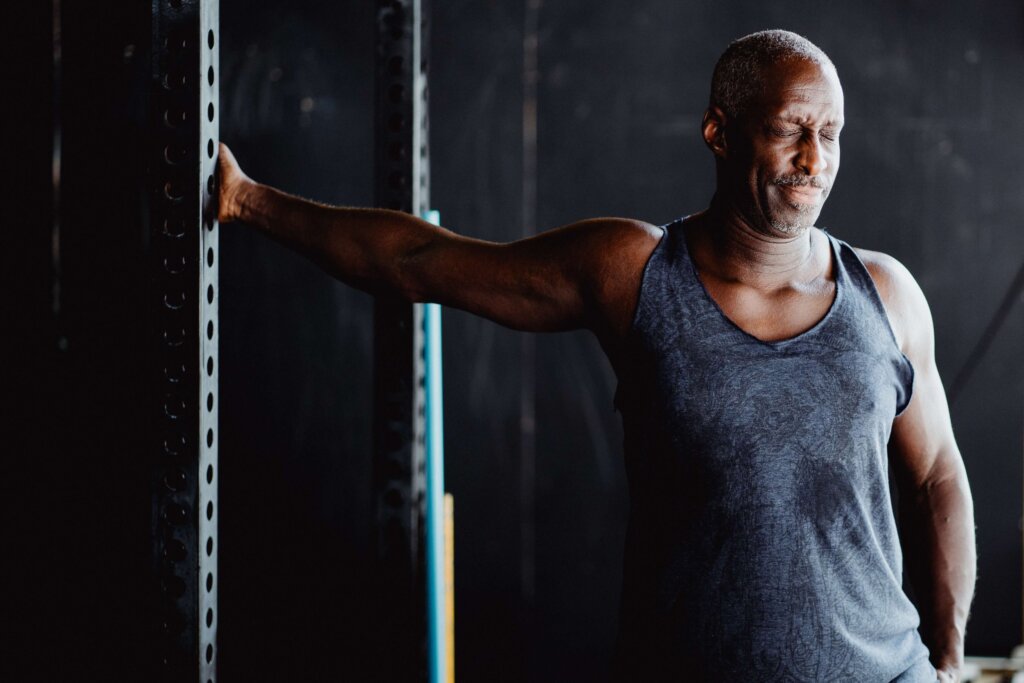
Reach one arm across your chest and hold it in the bend of your opposite arm. Relax your hand on the outstretched arm and use your bent arm to pull it across your body gently. You can stretch the other side of your shoulder by grabbing a door frame and slowly turning your body away.
14. Hip Flexor Stretch
Start in a half-kneeling position and slowly shift your body weight forward until you feel a stretch in the back of your hip. To make this a full-body stretch, rotate your spine in both directions from this position. Make sure to switch sides.
15. Knee Hugs
This stretch can be done from a standing position or by laying flat on your back. The standing version will be more dynamic since you will move more quickly to avoid balancing on one leg for a long time.
If you are lying on your back, extend one leg straight in front of you and rest it on the ground. Draw your other knee slowly toward your chest and hold it for several seconds before switching. The standing stretch is similar, but you will be balancing on your extended leg while drawing the other toward your chest.
For More Flexibility Exercises, Check Out My Personal Training Services
If you’re looking for more help with your flexibility or want to improve your overall fitness, check out online or in-person training services with AP Wellness. Online training allows me to work with individuals nationwide to improve their physical and emotional health. Online personal training is also an excellent option for new moms who are unable to come to the gym for training. Contact me today with any questions or to schedule a consultation.
